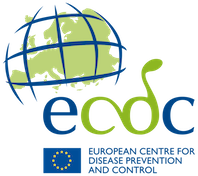Chikungunya virus disease risk assessment for mainland EU/EEA
Chikungunya virus disease is an Aedes-borne disease widely distributed in tropical and subtropical regions. Globally, the virus is predominantly transmitted by Ae. aegypti and Ae. albopictus mosquitoes. Aedes albopictus is established in a large part of Europe. Aedes aegypti is established notably in Cyprus, around the Black Sea and in the outermost region (OR) of Madeira.
Chikungunya is not endemic in mainland EU/EEA and the majority of the cases are travellers infected outside of mainland EU/EEA. When the environmental conditions are favourable, in areas where Ae. albopictus is established, viraemic travel-related cases may generate a local transmission of the virus as demonstrated by the sporadic events of chikungunya virus transmission since 2007. According to the data in the scientific literature, the ambient temperature is one of the most important environmental factors influencing the mosquito-borne transmission of chikungunya virus. The optimal daily average temperature for chikungunya virus transmission by Ae. albopictus in temperate zones of the northern hemisphere is at 24 – 26 °C; however, transmission might occur within the temperature range of 12 – 30 °C [1].
The environmental conditions in most of the EU/EEA where Ae. albopictus or Ae. aegypti are established are currently unfavourable for mosquito activity and virus replication in mosquitoes; therefore, it is unlikely that further locally acquired chikungunya virus disease cases will occur in the coming weeks. However, due to delays in diagnosis and reporting, there may be further cases reported to ECDC in the coming weeks. The first locally acquired chikungunya virus disease cases in mainland EU/EEA were reported with a date of symptom onset in late May/early June. This is unusually early in the year, with most cases in previous years occurring in July or August, and might be related to the high pressure of imported cases, particularly from the Indian Ocean.
This year an unusually large number of locally acquired cases and clusters have been reported in mainland EU/EEA, which have led to several secondary and/or tertiary clusters within the EU/EEA.
For more information on locally acquired chikungunya virus disease cases, see ECDC’s seasonal surveillance report for chikungunya virus disease.
References:
- Gizaw Z, Salubi E, Pietroniro A, Schuster-Wallace CJ. Impacts of climate change on water-related mosquito-borne diseases in temperate regions: A systematic review of literature and meta-analysis. Acta Trop. 2024 Oct;258:107324. Available at: https://www.ncbi.nlm.nih.gov/pubmed/39009235




